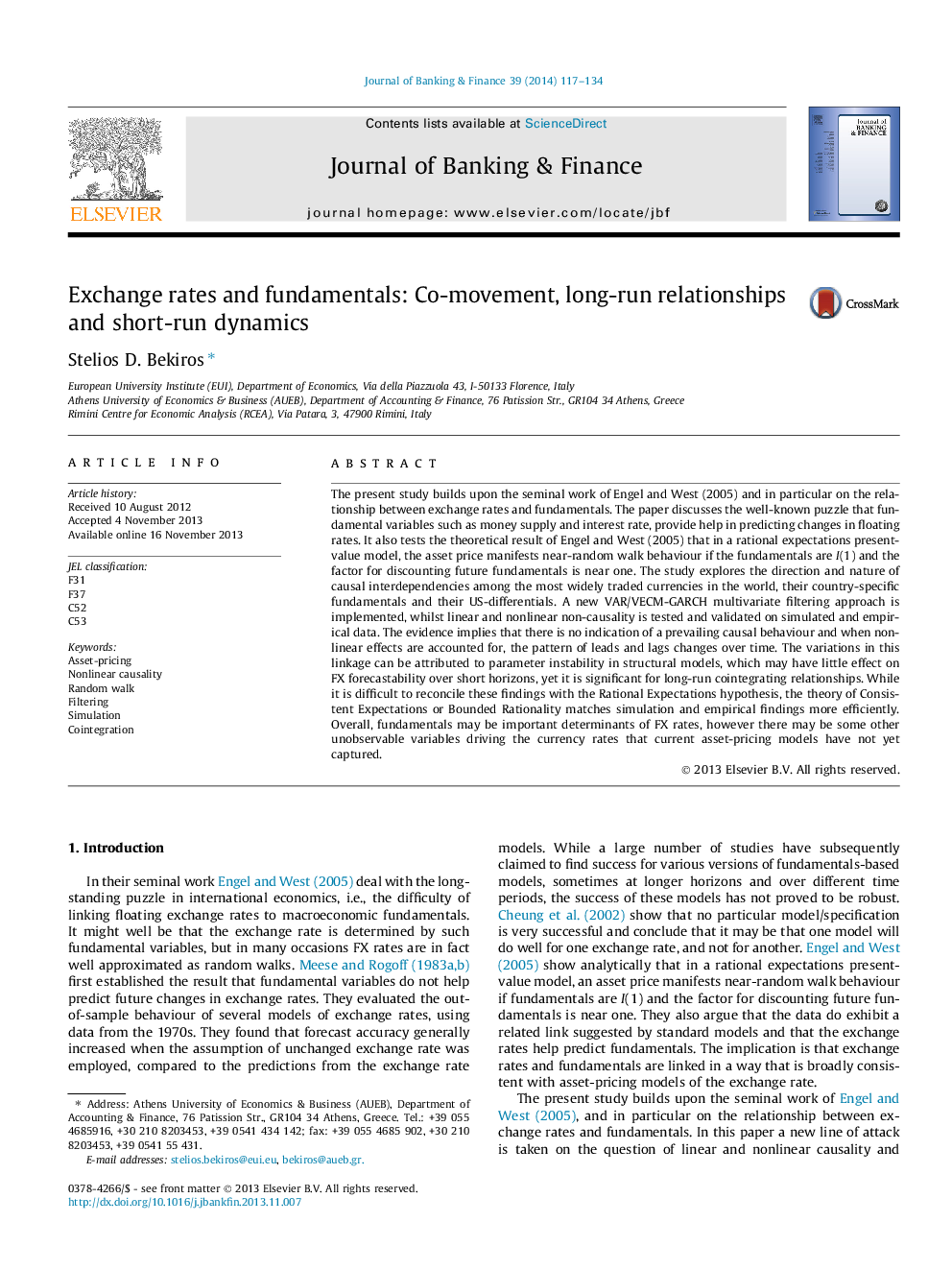| Article ID | Journal | Published Year | Pages | File Type |
|---|---|---|---|---|
| 5089087 | Journal of Banking & Finance | 2014 | 18 Pages |
Abstract
The present study builds upon the seminal work of Engel and West (2005) and in particular on the relationship between exchange rates and fundamentals. The paper discusses the well-known puzzle that fundamental variables such as money supply and interest rate, provide help in predicting changes in floating rates. It also tests the theoretical result of Engel and West (2005) that in a rational expectations present-value model, the asset price manifests near-random walk behaviour if the fundamentals are I(1) and the factor for discounting future fundamentals is near one. The study explores the direction and nature of causal interdependencies among the most widely traded currencies in the world, their country-specific fundamentals and their US-differentials. A new VAR/VECM-GARCH multivariate filtering approach is implemented, whilst linear and nonlinear non-causality is tested and validated on simulated and empirical data. The evidence implies that there is no indication of a prevailing causal behaviour and when nonlinear effects are accounted for, the pattern of leads and lags changes over time. The variations in this linkage can be attributed to parameter instability in structural models, which may have little effect on FX forecastability over short horizons, yet it is significant for long-run cointegrating relationships. While it is difficult to reconcile these findings with the Rational Expectations hypothesis, the theory of Consistent Expectations or Bounded Rationality matches simulation and empirical findings more efficiently. Overall, fundamentals may be important determinants of FX rates, however there may be some other unobservable variables driving the currency rates that current asset-pricing models have not yet captured.
Related Topics
Social Sciences and Humanities
Economics, Econometrics and Finance
Economics and Econometrics
Authors
Stelios D. Bekiros,
